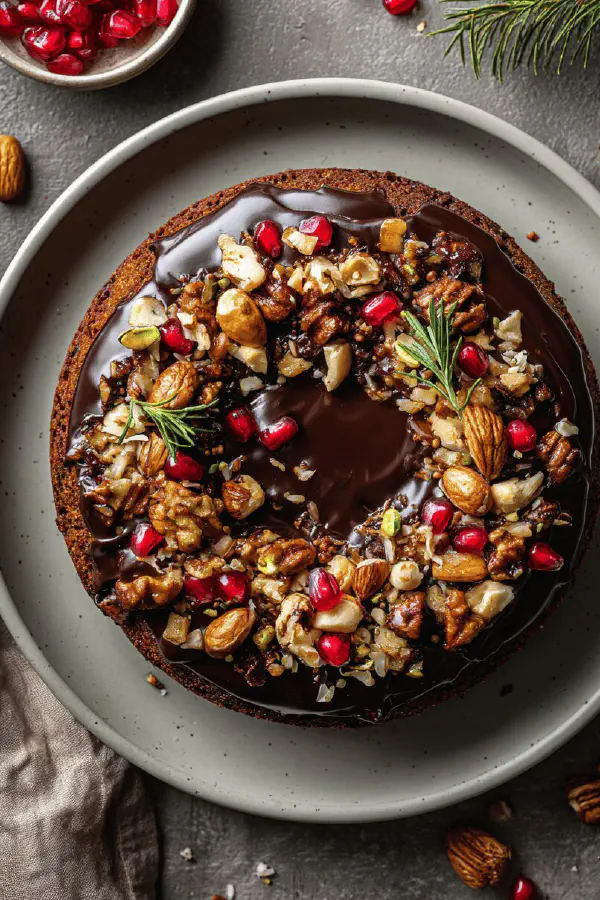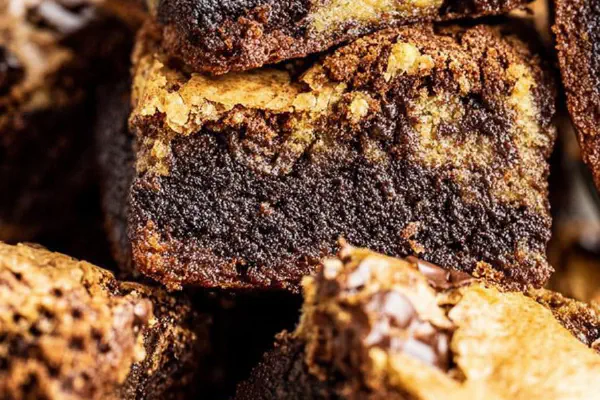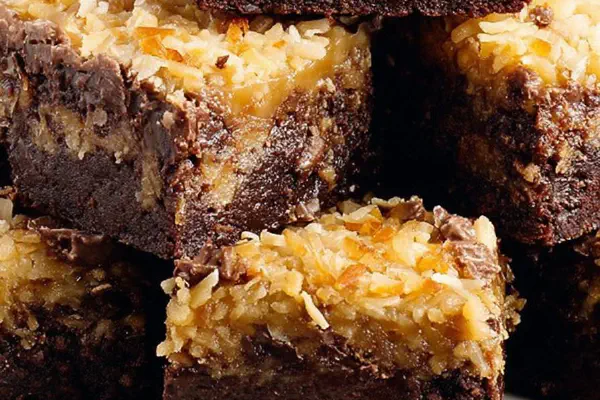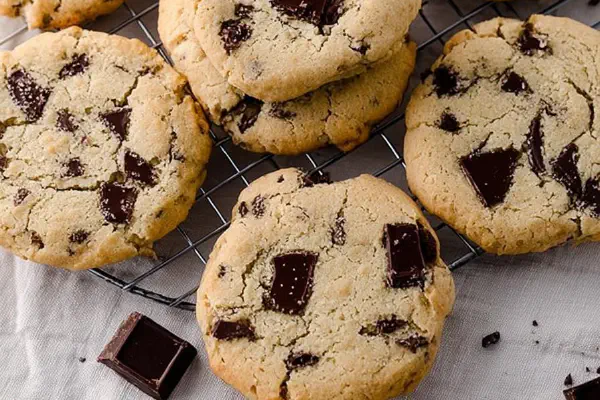Featured Recipe
Salted Chocolate Panforte

By Kate
"
Dense nut and fruit cake, rich with dark chocolate, cocoa, and warm spices. Combines roasted nuts and dried fruits, bound by a honey-sugar syrup with amaretto and citrus zest. Baked until caramel edges appear with a slightly firm center. Finished with a fleur de sel dark chocolate ganache layer. Stores well, flavors deepen over weeks.
"
Prep:
30 min
Cook:
40 min
Total:
Serves:
8 portions
dessert
Italian
chocolate
sweet
baking
Introduction
Dense, rustic, more than just a cake. Nuts and dried fruits roasted to deepen flavor, mingling with cocoa and warming spices. A vinegary bite of crackling pepper in that sweet matrix, tension and balance. Honey syrup melds the dry into sticky cohesive mass before the oven’s heat throws caramel notes and brings glossy sheen after the chocolate blends in. Citrus zest ever so finely grated, a sharp lift to tame the richness. Flour, cocoa, nuts: ratios shifted here to lighten but not dry the texture. Taste improves resting days ahead. Shelf life measured in weeks, flavors mature, sweet dark chocolate edges meet salt crystals on tongue. Panforte, evolved. Practical, no fuss but with a nod to old world precision. Keep eyes on color, touch the firm but moist feel — signals doneness better than clock.
Ingredients
About the ingredients
Nuts: swap pecans or walnuts for variety, roast lightly before chopping for best flavor and chew. Fruit: dry figs, dates, cherries combine chewy tartness. Flour: all-purpose preferred; nut flours reduce structure, might need adjusting syrup. Cocoa: Dutch-processed recommended for smooth flavor; natural cocoa can increase acidity. Lemon zest replaced by orange zest for brighter, less tart aroma. Honey: wildflower or clover; avoid super dark strong honeys if preference is mild sweetness. Liqueur adds depth and aroma; omit for virgin version but add splash extra honey and zest instead. Salted dark chocolate: crucial for contrast; otherwise sprinkle fleur de sel on finished top. Butter or oil for pan prep; nonstick spray is shortcut but risks uneven browning, butter preferred for flavor. Adjust sugar type to brown for richer caramel notes, white sugar leads to lighter taste.
Method
PREPARE PAN
- Center rack of oven; preheat to 160 C (320 F). Grease 6-inch springform pan walls generously with butter or coconut oil. Line base with parchment and dust bottom + sides lightly with cocoa powder to prevent sticking and add depth.
- In a medium bowl, toss nuts, dried fruits, flour, cocoa, clove, cinnamon, and cracked pepper. Spice balance is key; don't overload or can overpower the fruit’s natural sweetness.
- Pour honey, brown sugar, almond liqueur, and orange zest into a small heavy saucepan. Bring to a gentle boil, watch for foam and bubbling sound. Boil 20 seconds — too long and sugar caramelizes too much, too short and it won’t bind well.
- Immediately pour syrup over dry mixture. Stir briskly, folding ingredients to coat. Mixture thickens, shines, clumps together. Drizzle in melted salted chocolate while still warm. Fold quickly but evenly. The residual heat melts chocolate further into mix for that glossy finish.
- Scrape mixture into pan. Press and smooth with a spatula or back of spoon, pack firmly but not overly tight. Bake 38 minutes — sides will caramelize, smell shifts to fragrant toasted nuts and honey, center slightly firm to touch but still yielding. Avoid overbaking; dry panforte is crumbly rather than chewy.
- Cool completely in pan on wire rack. Run thin knife around edges to release carefully. Transfer to plate. Optional: Brush top with leftover melted salted chocolate or sprinkle fleur de sel flakes to boost salty-sweet contrast.
- Store airtight at room temp. Keeps 3 weeks. Flavors intensify with time, texture firms but retains chew.
- If mixture feels too dry before baking, add a teaspoon more honey or a splash of amaretto. If sticky after baking, rest longer uncovered to lose some moisture. Flour substitution: nut flour or gluten-free blend works if precision is maintained in weight; expect slight texture differences.
- Don’t skip zest. It cuts fat and sugar richness with bright citrus lift. Use quality dark chocolate, salted to bring complexity. Texture: crunch from nuts, chew from fruits, smooth dense chocolate binding — a dance in every bite.
DRY MIX
SYRUP
COMBINE
BAKE
COOL & FINISH
TROUBLESHOOTING
FINAL NOTES
Technique Tips
Temperature control crucial: 160 C offers gentle bake preventing cracks or dry edges. Watch caramelization on pan sides, should darken but not burn. Honey syrup boiling time short; overheating causes grainy texture. Stirring after syrup addition demands speed to coat then incorporate chocolate smoothly—if too slow, chocolate clumps or cools unevenly. Press mixture firmly into pan to avoid air pockets, ensuring dense chewy texture. Cooling fully before unmolding prevents cracking or crumbling. If chocolate layer needs smoothing, warm it slightly before spreading quickly to avoid streaks. To serve, slice with sharp serrated knife—clean cuts show characteristic cross-section of nuts and fruit. Storage airtight or wrapped in wax paper avoids drying out but be aware flavor deepens with time, so best tasted after 48 hours.
Chef's Notes
- 💡 Measure nuts before toasting. Roast lightly for depth in flavor but don’t burn. Cool before chopping; enhances chewiness and crunch.
- 💡 Dried fruit mix? Use figs, apricots, or cherries for variety. Play with textures and flavors; chewy goes well with the rich chocolate.
- 💡 Pay attention to syrup boiling. Short boil time crucial; stickiness risk if too long. Watch bubbles closely, quick stir to keep smooth.
- 💡 Packing into the pan is key. Firm but don't overdo it. Air pockets? Avoid them for dense, chewy texture. Flatten, smooth tops carefully.
- 💡 Keep an eye on baking. 38 minutes—sides caramelize, center stays firm but gives slightly. Watch for dark edges; smell changes too.
Kitchen Wisdom
What if panforte too dry?
Add more honey or a splash of amaretto before baking. Too crumbly after? Moisture lost; keep covered. Try 48 hours rest.
Sticky after baking?
Let air sit for some time. Uncover to decrease moisture. Adjust syrup next time; too short boil leads to stickiness.
Substitutions for fruit or nuts?
Pecans or walnuts work too. More chew; flavors shift slightly. Adjust measurements to maintain density.
Storage options?
Airtight container is best. Wrap in wax paper or parchment for moisture control. Flavors deepen over time, don’t rush; wait.



